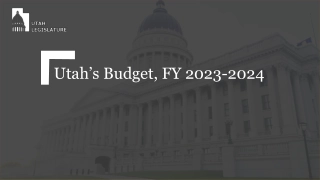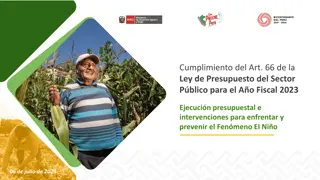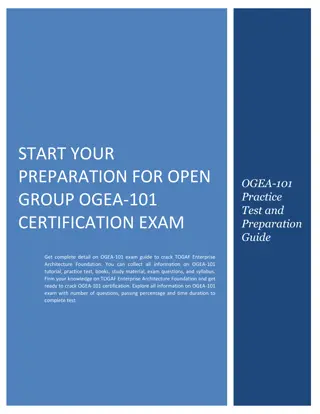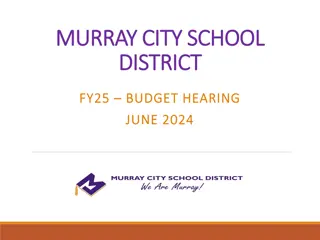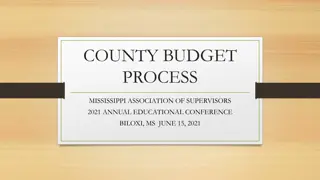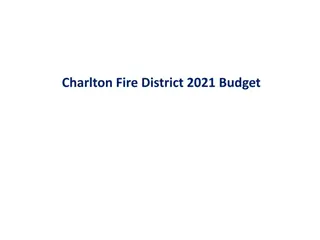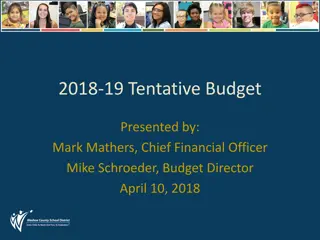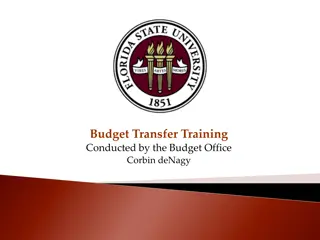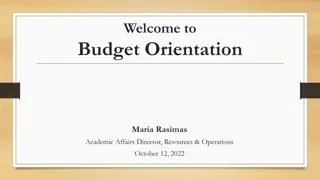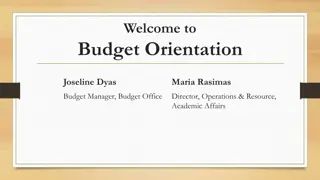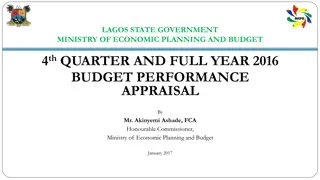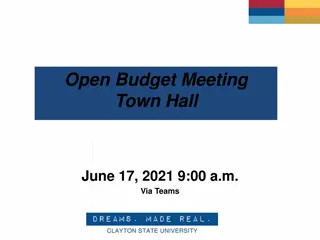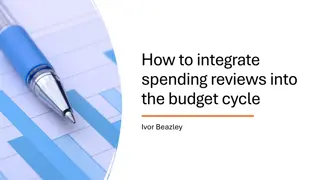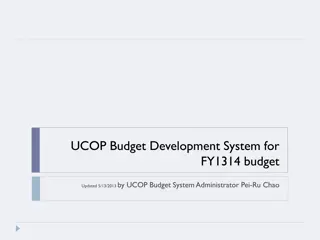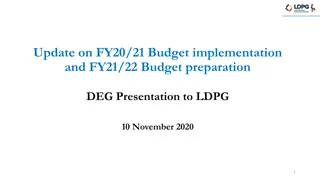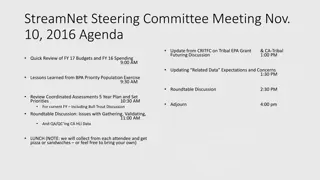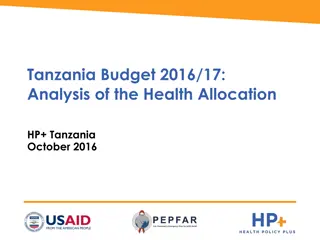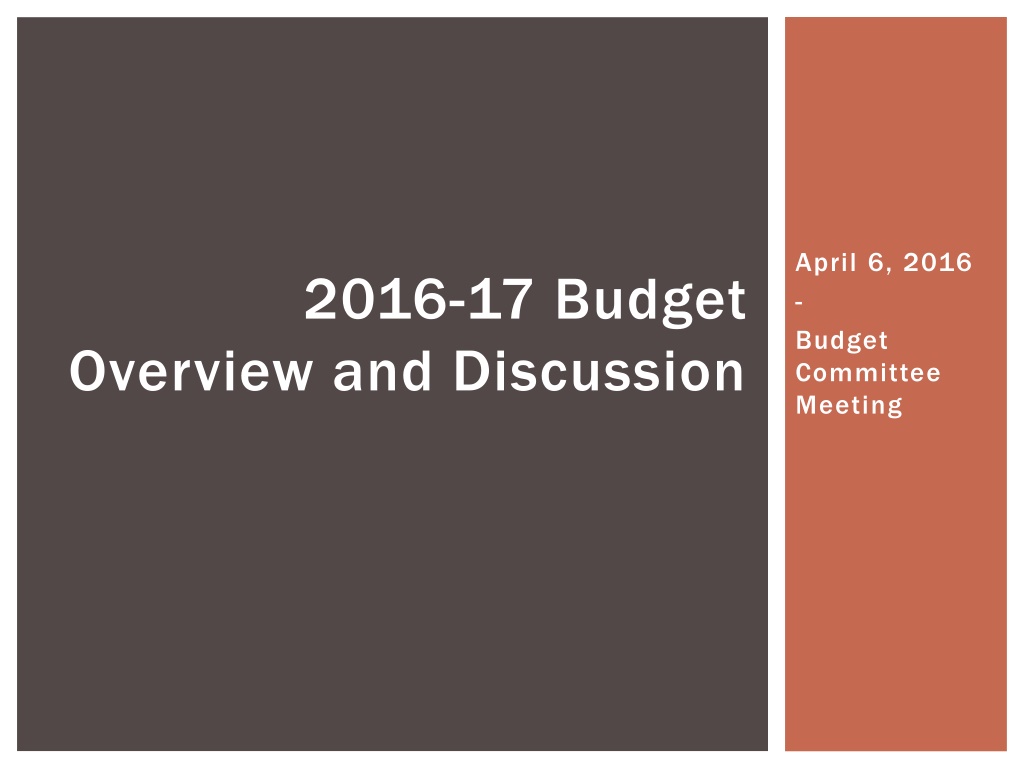
Understanding Budget Committee Meetings and Fund Management
Explore the intricacies of budget committee meetings, acronyms, budget process, committee duties, fund structures, transaction functions, and balanced budget concepts. Learn about the importance of maintaining a balanced budget and understanding fund balances in educational financial management.
Download Presentation

Please find below an Image/Link to download the presentation.
The content on the website is provided AS IS for your information and personal use only. It may not be sold, licensed, or shared on other websites without obtaining consent from the author. Download presentation by click this link. If you encounter any issues during the download, it is possible that the publisher has removed the file from their server.
E N D
Presentation Transcript
April 6, 2016 - Budget Committee Meeting 2016-17 Budget Overview and Discussion
Acronyms ODE Oregon Department of Education SSF State School Fund ADM Average Daily Membership ADMw Average Daily Membership Weighted
Budget Process Overview Budget Committee Reviews, modifies, and finally approves the proposed budget. Establishes the maximum property tax levy rate or dollar amount. District Files Approved Budget with TSCC by May 15 Board Adopts Budget and Enacts Resolutions by June 30 Limited to changes, within a fund, of not more than $5000 or 10%, with exceptions. District Files Adopted Budget and Response to Certification Letter within 15 days after budget adoption Levy Certification filed with County Assessor s Office by July 15 Budget Document filed with County Clerk by September 30
Budget Committee: Official Duties Meet publically to review the proposed budget document. Provide an opportunity for the public to ask questions and comment on the budget. Approve the budget with all funds in balance. Approve the maximum rate or dollar amount of property taxes.
Fund Structure We currently have 9 Active and Independent Funds General Fund Food Service Federal Funds Capital Projects Debt Service Early Retirement Student Body Bus Replacement Energy Projects
Functions and Objects Functions Objects Functions define the WHO For each transaction we need to know for whom the amount is being recorded. 1000 Instruction 1111 K-2 Classroom 2000 Support Services 2410 Office of the Principal Objects define the WHAT For each transaction we need to know what the transaction records. 0100 Salaries 0111 Certified Salaries 0200 Associated PY Costs 0220 FICA/Medicare 0400 Supplies/Materials 0410 Consumable Supplies
A Balanced Budget Beginning Fund Balance + Revenue Resources + Transfers In - Transfers Out Requirements - Expenditures - Contingency = Ending Fund Balance
Beginning Fund Balance The budgeted Beginning Fund Balance is an estimate of how much each fund will have remaining once the prior year has come to a close. Once the prior year has been audited, the financials are updated with the actual amount.
Revenue Revenue is categorized into the following: Local Sources Taxes Tuition Intermediate Sources County School Funds Medicaid Administrative Claiming State Sources State School Fund Some Grants Federal Sources IDEA Funds Title Funds Most revenue estimates are captured from data provided by the source agency. Some estimates are based on prior year data and program usage.
Transfers Transfers are how we move money between funds. Often this means a transfer from the General Fund to another, dependent fund, such as Early Retirement, or the Bus Replacement Fund. The Transfers In and Transfers Out for the District budget should always match.
Expenditures All the spending for the district. Includes personnel, debt service payments, supplies, insurance, equipment, and many, many other things.
Contingency Contingency is how we allow ourselves to increase our expenditure budget, in the event that we have unfunded, yet necessary changes. Contingency is never spent. Instead, the Board could approve an increase in the expense budget and a decrease in contingency as needed.
Ending Fund Balance The Ending Fund Balance is the amount left over for use in the following fiscal year. An Ending Fund Balance of 3-5% of the total requirements is advisable. This percentage can be more depending on unknown economic conditions during budget preparation.
Where does our funding come from? ODE Formula Revenue Other Revenue Local Sources Property Taxes Common School Fund County School Fund State School Fund Includes Transportation Grant Tuition Donations ESD Transits Federal Revenue High-Cost Disability Other Grants
2014-15 Revenue Adjustments April 4, 2016 $191,646 2014-15 SSF Adjustment
2015-16 CSD ADMw Estimate 1,266.00 12.00 0.00 138.00 0.00 36.00 2.00 0.00 0.00 _________ 1454.00
2016-17 ODE SSF Estimate Estimate Date: March 7, 2016 Based on $7.376 Billion Co-Chair's Budget with 49.2/50.8 split
2016-17 CSD SSF Estimate Estimate Date: March 7, 2016 Based on $7.235 Billion Co-Chair's Budget with 50/50 split Using the Funding Formula, an estimated $213k in Transportation Grant, and our internal estimate of ADMw we should prepare for the following: Total Formula Revenue: $10,282,489 Per ADMw Funding: $7,071
Historic Total Formula Revenue Fiscal Fiscal Year 2016-17 2015-16 2014-15 2013-14 2012-13 Year ADMw ADMw 1454.00 1386.11 1425.78* 1019.06* . .960.04* Revenue (District Revenue (District Only) $ 10,282,489 Only) Per Per ADMw ADMw $ 7,071 6,918 6,935 6,821 6,259 9,589,270 9,888,169 6,950,760 6,009,233 *Includes Small High School Funding
Resources TSCC Website Publications (Tax Supervising and Conservation Commission) http://www.tsccmultco.com/publications.html Oregon Department of Education : District SSF http://www.ode.state.or.us/search/results/?id=344 Program Accounting and Budgeting Manual (PBAM) http://www.ode.state.or.us/services/ssf/finance/budgetacctg/2014- pbam.pdf

